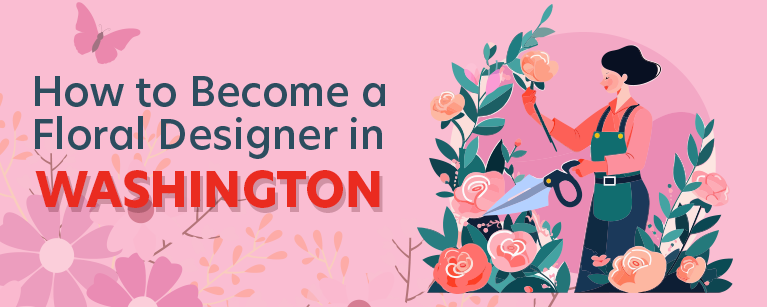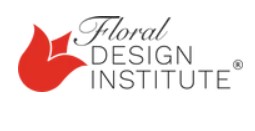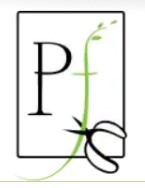
Floral design is a special and unique way to express your artistic talent.
Not many people have tried it, but you won’t know if you’re good at something until you do.
So grab a few flowers and bows and see what you have inside of you.
Maybe you’ll be good enough to make it your future career.
This is your first sign and basic guide on how to become a great Floral Designer in Washington.
Table of Contents
How To Become a Floral Designer in Washington
Before you decide that this profession is for you, there are a few things you should be introduced to.
Step 1: Find out what your job will require
Before you invest anything like time or money into this profession, do research on it in your area.
Find out if there’s a market for the products you plan on producing.
For example, floral shops tend to thrive more where there are younger people.
Weddings, christenings, and gender reveal parties are more likely to bring you business.
Step 2: Learn the basics
Floral design is a unique and diverse field. You’re going to work with living things, and you have to learn to adapt to the material.
Not only that, you will have to learn wrapping, patterns, and color matching so that no texture or print clashes.
The flowers will always have to grab the attention, but you have to present it in a way that people know it was done by a professional.
Step 3: Customer is always right
In this job, you will constantly be in contact with people. That usually means that there will be stressful situations, too.
So if you’re more introverted, maybe you should consider this as a hobby.
You will have to learn to be a moderator in some situations and how to compromise with your clients for their big days of celebration.
A good review goes a long way.
People usually recommend the services they’re satisfied with.
Step 4: Use every opportunity to your advantage
The internet is a marvelous place to show your work.
There are so many social media that people spend hours on; there is no chance that someone in need won’t stumble upon a post from your work.
So take pictures and videos of your work, add some catchy music, and the algorithms will do the promoting for you!
If you get booked for events, don’t forget to bring business cards with you as well!
Floral Design Schools in Washington
If you think you will do better if you take a class, you’re in luck.
There are plenty of schools in Washington that will provide that service.
Floral Design Institute
The Floral Design Institute provides online and in-person classes for beginners and advanced levels.
The prices of the classes range depending on the level, duration, material, and attention the students need.
The online classes are somewhat cheaper.
The beginner classes are $2,475, and you get a certificate at the end.
The advanced classes are $950, and you get a certificate with this program, too.
Wedding specialist classes can reach up to $ 3,800.
The in-person classes range from $1.750 to $4.250.
Washington Flower School
Washington Flower School offers professional floral design courses as well as seasonal workshops perfect for new designers or flower enthusiasts.
They are affiliated with Park Florist in Takoma Park, Maryland.
They provide certificates after every completed workshop and course
Flirty Fleurs Flower School
They provide 4 workshops every month based on themes.
Every workshop has provided information for the location, cost, and activities on their website.
The prices are around $200 per workshop.![]()
| School Name | Address |
|---|---|
| Floral Design Institute | 1138 NW 17th Ave. Portland, OR 97209 |
| Washington Flower School | 6921 Laurel Ave Takoma Park, MD 20912 |
| Flirty Fleurs Flower School | Seattle, Washington |
Salary
The average Floral Designer salary in Washington is $59,114.
The minimum is around $47,988, and the maximum is around $71,441.
This can range from city to city, but your skills, experience, and education can bring your prices up.
Annual Salary Range:| Location | Avg. Annual Salary |
|---|---|
| Seattle | $60,794 |
| Spokane | $54,237 |
| Tacoma | $59,252 |
| Vancouver | $57,254 |
| Bellevue | $60,794 |
| Everett | $59,703 |
| Federal Way | $59,252 |
| Kent | $59,134 |
| Yakima | $55,593 |
| Bellingham | $56,629 |
Regional Salary in Washington
| Region | Employed | Avg. Annual Salary | Avg. Hourly Pay | Top 10% Annual Salary | Bottom 10% Annual Salary |
|---|---|---|---|---|---|
| Bremerton-Silverdale, WA | 60 | $37,200 | $17.88 | $44,840 | $32,740 |
| Kennewick-Richland, WA | 40 | $37,900 | $18.22 | $42,390 | $35,280 |
| Olympia-Tumwater, WA | 40 | $39,150 | $18.82 | $46,780 | $32,740 |
| Seattle-Tacoma-Bellevue, WA | 470 | $42,120 | $20.25 | $47,940 | $36,720 |
| Spokane-Spokane Valley, WA | 70 | $37,370 | $17.97 | $43,810 | $32,740 |
* Employment conditions in your area may vary.
Frequently Asked Questions
What is the best major for a florist?
Business, Hospitality Management, Fine Arts, and Liberal Arts are the top four majors that would suit a floral designer.
Is there a demand for floral designs?
Despite declining employment, about 3,800 openings for floral designers are projected each year, on average, over the decade.
All of those openings are expected to result from the need to replace workers who transfer to other occupations or exit the labor force, such as to retire.
What skills do you need for a florist's CV?
For your CV, you will need powerful skills like knowledge of flowers, visual design skills, customer service skills, project management skills, and creativity.
Your ability to understand the needs and desires of customers and stick to timelines should be noted.
Floral Designer Info by State
- Alabama
- Alaska
- Arizona
- Arkansas
- California
- Colorado
- Connecticut
- Delaware
- Florida
- Georgia
- Hawaii
- Idaho
- Illinois
- Indiana
- Iowa
- Kansas
- Kentucky
- Louisiana
- Maine
- Maryland
- Massachusetts
- Michigan
- Minnesota
- Mississippi
- Missouri
- Montana
- Nebraska
- Nevada
- New Hampshire
- New Jersey
- New Mexico
- New York
- North Carolina
- North Dakota
- Ohio
- Oklahoma
- Oregon
- Pennsylvania
- Rhode Island
- South Carolina
- South Dakota
- Tennessee
- Texas
- Utah
- Vermont
- Virginia
- Washington
- West Virginia
- Wisconsin
- Wyoming









